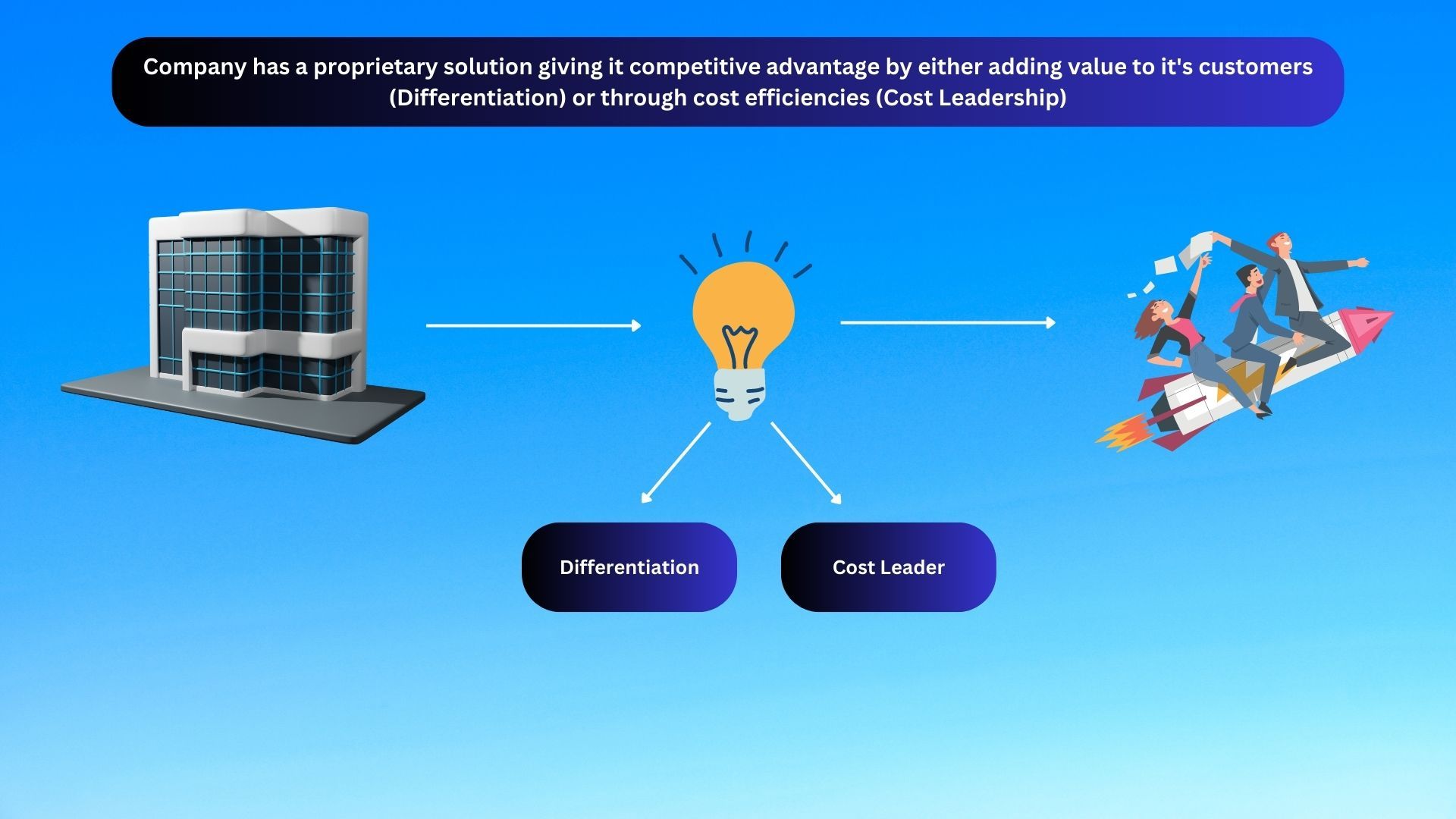Strategy Byte - Week 5 : Competitive Advantage

Table of Contents
- Recap
- Final Thoughts on Purpose
- Competitive Advantage
- Value vs. Cost
Recap
Last week we discussed clarity & specificity of purpose. We said our core purpose should be clear in that it guides us on :
- What action to take?
- Where to compete?
- Who our competitors are ?
Then we discussed whether the purpose statement needs to be reviewed or is it set in stone? It depends on
- The core purpose &
- Any changes set in motion by the external environment like traditional banks being disrupted by Fintech or IT companies (e.g., Apple).
We ended with the Problem Statement which is a clear description of the problem being tackled & is typically most effectively stated as a question.
Before we go further, I want to highlight some final thoughts on core purpose.
Final thoughts on Purpose
Jim Collins (author of Good to Great, Built to Last among others) coined the phrase Purpose Before Profits. Companies which follow a genuine purpose tend to find ways to create sustainable returns despite external conditions as they are anchored to their core purpose. E.g., Patagonia. (Please read this inspiring article on Patagonia).

Let us tackle some questions when considering the problem solving approach to strategy -
A. What if the problem is defined wrongly? Wouldn’t the strategy arising out of that problem statement be wrong too?
B. What if the core purpose is not clearly defined to it's required specificity.
Let us consider the below example.
Losing customers is a strategic problem for any company. Now, the problem statement arising out of this can be due to any one or more of the below reasons:
- Competitor comes out with similar product at lower price
- Competitor comes out with better product at same or lower price
- A start up creates an entirely new market (Blue Ocean Strategy) which makes the company’s products obsolete
- Internal problems within the company causes it to lose focus due to which it's products lag behind competitors & the company loses it's innovation edge.
The company analyzed the root cause & found that it was due to 1 & 2 but ignored 4. So, obviously the problem statement arising from this diagnosis will be wrong & so will the resulting strategy.
Hence, it is better to correctly diagnose or analyze the problem to ensure proper basis which can then be tweaked in line with further information to iterate the strategy.
We have to keep tweaking our core purpose till it reaches the required level of specificity to ensure efficient allocation of resources to achieve the core purpose.
That’s all for now. We will revisit purpose as this is the starting point in strategy.
Competitive Advantage
After we zero in on the core purpose or a problem, what should we do next? The next obvious decision point is :
- Where to Compete &
- How are we going to win in the chosen "where to compete" field?
(Source : Playing to Win)
Before we get into that, we need to consider our competitive advantage in the area where we decide to compete so that we can chose how to win there.
The way we can win is by doing better than others to achieve our core purpose & for that, we should have something special or a proprietary solution which makes us better than our peers. The proprietary solution is
Internal to Company comprising of :
- People
- Process
- Systems
What Proprietary Solution (It can be people, process or systems) does the company have to carry out it's core purpose or solve a customer pain point?
Does the proprietary solution give the company a Competitive Advantage?
A company's competitive advantage cannot be viewed in isolation & should be viewed in tandem with those :
External to Company comprising of :
- Market
- Competitors
- Customers
How is the product or service unique or different compared to other products or services offered by competitors &
How is it better than those offered by competitors?
So, a proprietary solution that is unique & better than those offered by competitors gives the company a competitive advantage. How?
- By generating greater value than competitors for it's customers or
- By having a lower cost structure than competitors when serving it's customers
The proprietary solution can be a superior brand, proprietary technology, superior data on customers, superior process or systems etc which results in either of the above.
This is where we bring in the three methods (By Michael E. Porter) by which competitive advantage can be realized :
- Differentiation - where greater value is generated
- Cost Leadership - where the company's cost structure is superior to that of competitors. Note that cost efficiencies does not equal cost leadership. A company may be cost efficient but it's competitors may have lower cost base & hence does not make it a cost leader. Cost leadership should be looked at in comparison with peers & competitors.
- Focus - Where the above are applied to a narrow or focused set of customers

Value vs. Cost
The choices made by a company to achieve it's goals under both choices will be different.
- Companies which follow Differentiation as it's core strategy will have products or services designed around customer preferences which is given priority while
- Cost leaders prioritize costs & processes around that objective to ensure standardization & lower cost base compared to competitors.
Next Week we will explore :
- Value Addition with an example on Differentiation vs cost leadership
- Where to compete